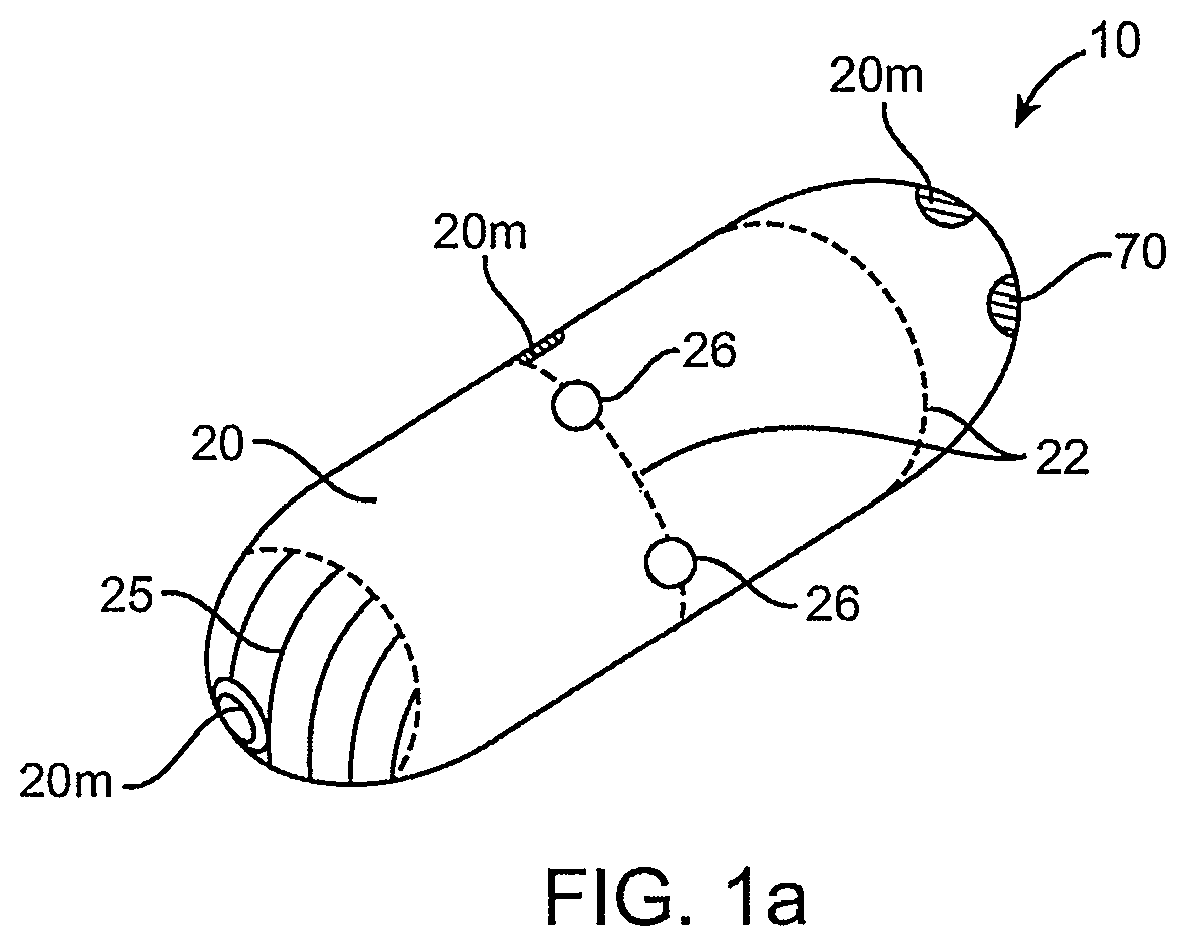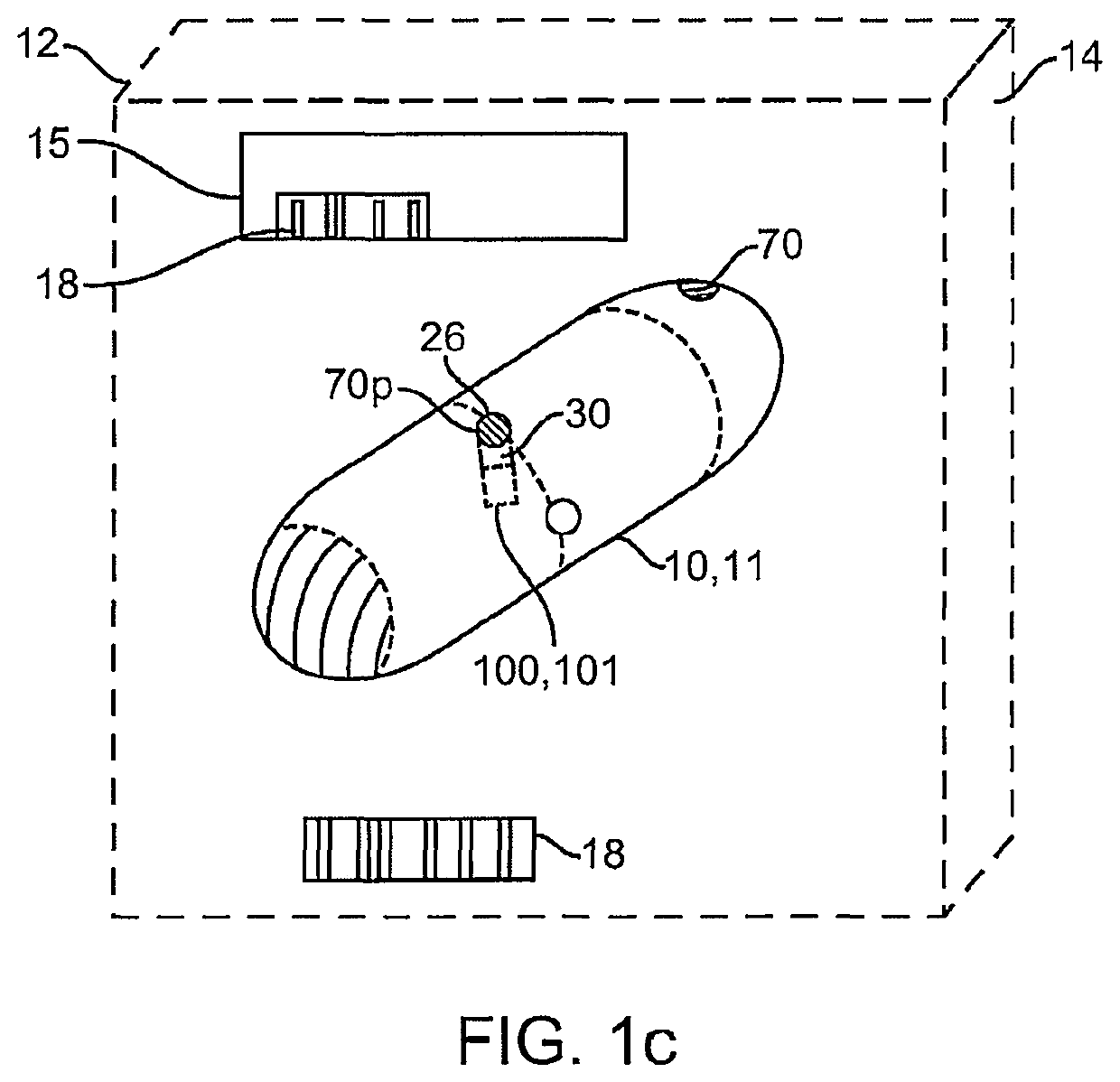Clotting factor preparations for delivery into tissue of the intestinal tract using a swallowable drug delivery device
a technology of clotting factor and tissue, which is applied in the direction of diagnostic recording/measuring, peptide/protein ingredients, catheters, etc., can solve the problems of limited application, slow or erratic absorption of drugs, and breakdown/degradation of drug compounds in the stomach, so as to reduce the degradation of biological activity and the effect of minimum bioactivity
- Summary
- Abstract
- Description
- Claims
- Application Information
AI Technical Summary
Benefits of technology
Problems solved by technology
Method used
Image
Examples
Embodiment Construction
[0069]Embodiments of the invention provide devices, systems and methods for delivering medications in to various locations in the body as well as therapeutic compositions comprising the medication. As used herein, the term “medication” refers to a medicinal preparation in any form which can include one more drugs or other therapeutic agent as well as one or more pharmaceutical excipients. Many embodiments provide a swallowable device for delivering medication within the GI tract including into the wall of the small intestine. Particular embodiments provide a swallowable device such as a capsule for delivering medications such as a clotting factor for the treatment of a clotting disorder into the wall of the small intestine and / or peritoneum and / or peritoneal cavity or other GI organ. As used herein, “GI tract” refers to the esophagus, stomach, small intestine, large intestine and anus, while “Intestinal tract” refers to the small and large intestine. Also, as used herein the term “p...
PUM
| Property | Measurement | Unit |
|---|---|---|
| prothrombin time test | aaaaa | aaaaa |
| density | aaaaa | aaaaa |
| density | aaaaa | aaaaa |
Abstract
Description
Claims
Application Information
 Login to View More
Login to View More - R&D
- Intellectual Property
- Life Sciences
- Materials
- Tech Scout
- Unparalleled Data Quality
- Higher Quality Content
- 60% Fewer Hallucinations
Browse by: Latest US Patents, China's latest patents, Technical Efficacy Thesaurus, Application Domain, Technology Topic, Popular Technical Reports.
© 2025 PatSnap. All rights reserved.Legal|Privacy policy|Modern Slavery Act Transparency Statement|Sitemap|About US| Contact US: help@patsnap.com



